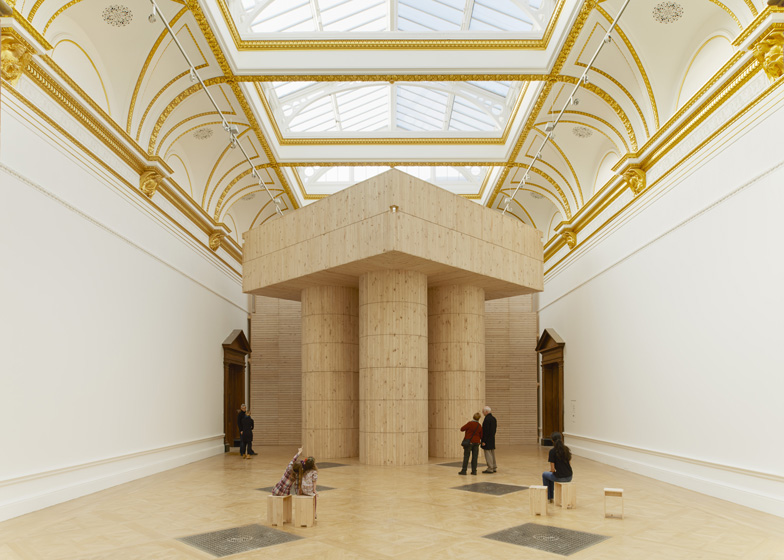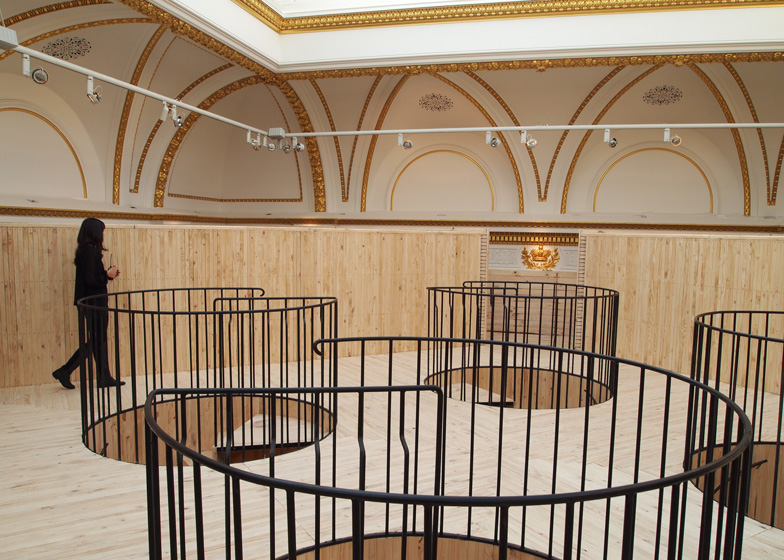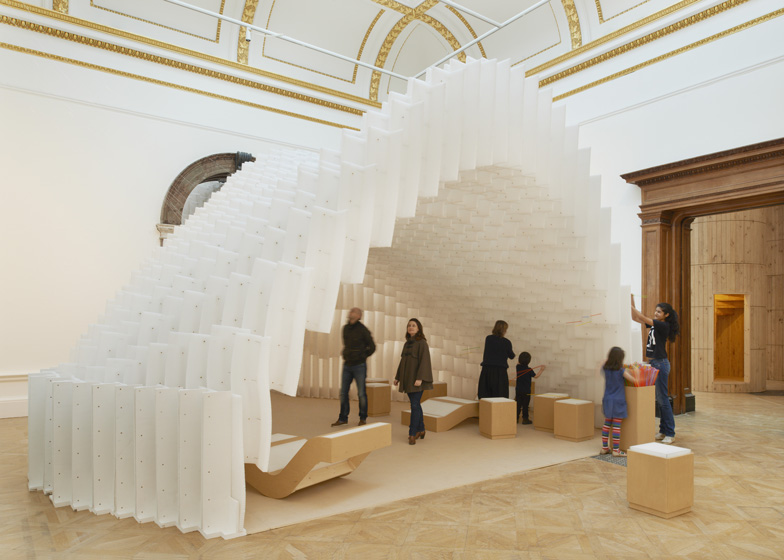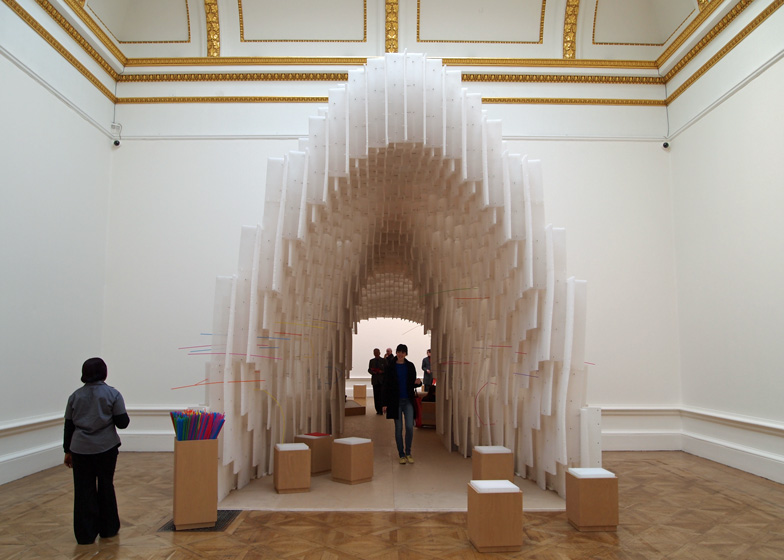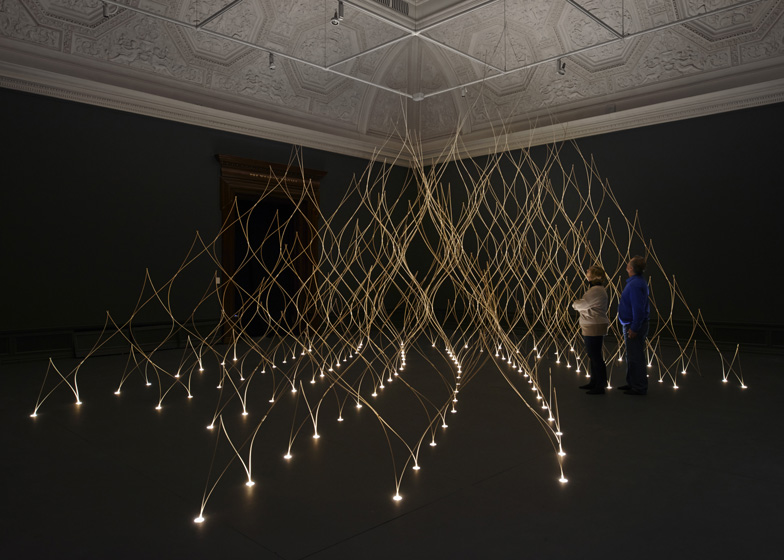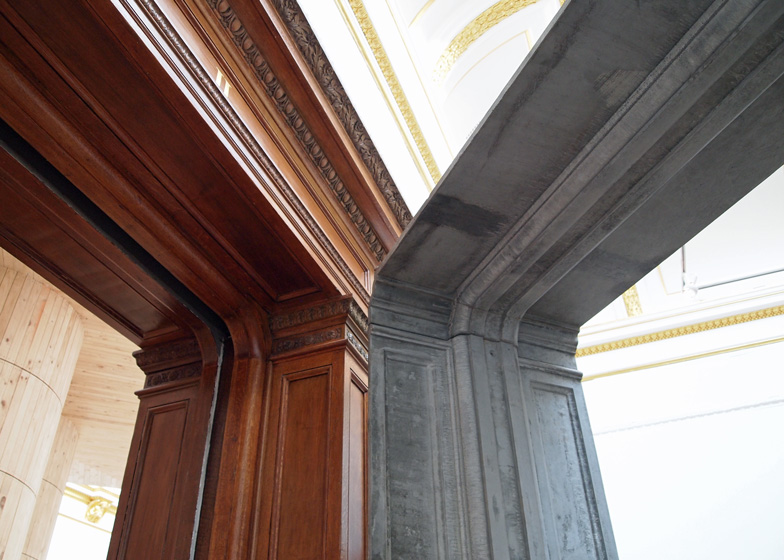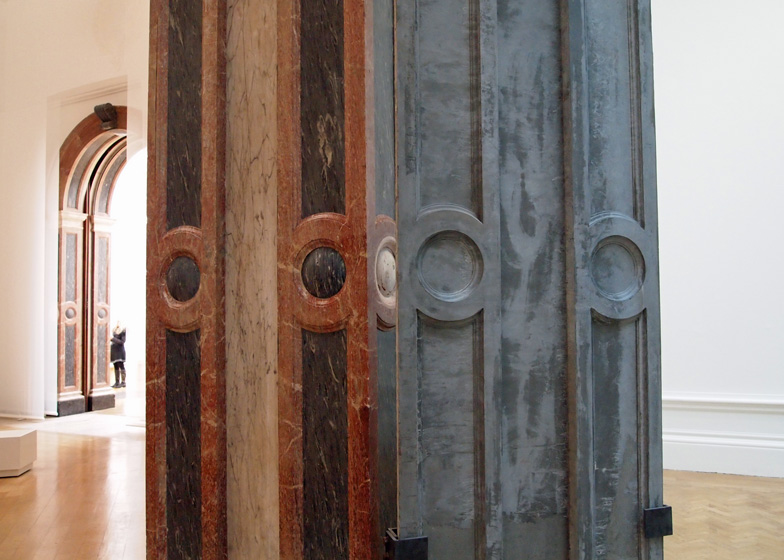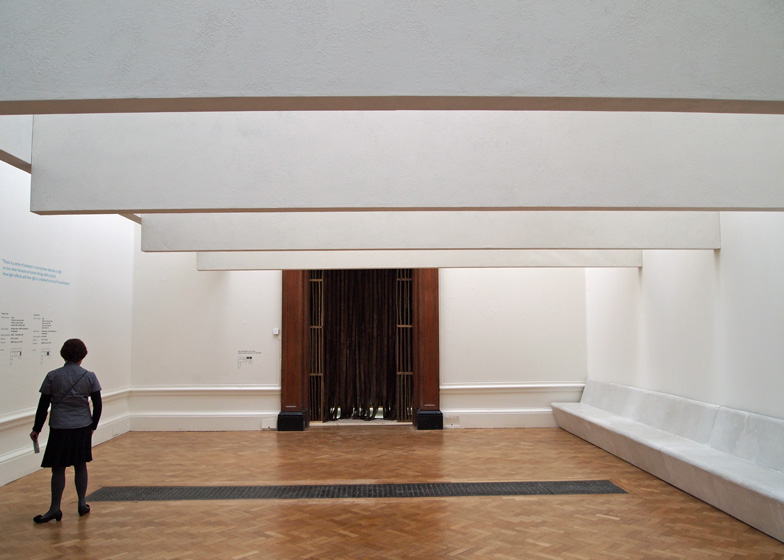Architects including Álvaro Siza, Eduardo Souto de Moura and Kengo Kuma have taken over the galleries of London's Royal Academy of Arts for an architecture exhibition that features a labyrinth of sticks, an inhabitable timber monument and a web of scented bamboo (+ slideshow).
Opening to the public later this week, Sensing Spaces: Architecture Reimagined comprises a series of site-specific installations inserted into the main galleries and front courtyard of the Royal Academy, which are designed to explore the most fundamental elements of architectural space.
"Unlike almost any other art form, architecture is part of our everyday life, but its ability to dramatically affect the way we think, feel and interact with one another is often overlooked," said curator Kate Goodwin.
The first installation is a towering wooden structure by Chilean architects Pezo von Ellrichshausen intended to reveal parts of the gallery that are usually left unseen.
Four chunky columns each contain spiral staircases, leading up to a viewing platform positioned at the height of the gallery's cornices. Here, visitors are offered a framed view of the room's ornamental ceiling, before descending via a gently sloping ramp hidden within the rear wall.
Portuguese architect Eduardo Souto de Moura has added a pair of concrete arches to two galleries within the exhibition. Constructed from a high-performance reinforced concrete, the arches mirror two existing doorways, but are positioned at an angle to align with buildings located outside the gallery.
"This installation is about the permanence of form and continuity in architecture," Souto de Moura told Dezeen at the press launch earlier today. "What changes are the materials, the construction system and, of course, the architectural language.
The piece by Japanese architect Kengo Kuma also occupies two rooms within the gallery. Designed to emphasise the importance of smell in architecture, the intricate bamboo structures are infused with aromas that Kuma associates with the house he grew up in. "The concept was to minimise materials but to maximise senses," the architect told Dezeen.
The first structure is positioned in the centre of the gallery and takes on the smell of hinoki, a kind of Japanese cedar often used in construction, while the second wraps around the edges of a small room and is infused with the smell of tatami, the traditional straw mats used as flooring in most Japanese houses.
Li Xiaodong of China constructed a maze of hazel for his section of the exhibition. Visitors weave their way through narrow pathways with illuminated floors, eventually finding various wooden hideaways.
Further on, the space opens out to a pool of pebbles. A mirrored wall allows the space to appear larger than it really is, while a small window offers an opportunity for a second glance on the way out.
The spatial qualities of light and shadow shaped the installation by Yvonne Farrell and Shelley McNamara of Irish firm Grafton Architects. The architects suspended large wooden structures from the ceilings of two galleries to recreate the experiences of both sun and moonlight.
Concealed lighting moves gently across the ceilings to subtly change the conditions of the rooms at different times, while benches encourage visitors to sit down for prolonged periods of time.
The sixth structure in the show was designed by architect Diébédo Francis Kéré, who works between Germany and Burkina Faso in Africa. Rather than using clay, a material Kéré is more familiar with, the architect chose to construct a tunnel using a plastic honeycomb panels.
Colourful straws are positioned around the installation allowing visitors to make their own additions to its form, so that over the course of the exhibition its surface will transform into a mass of spikes.
Álvaro Siza's installation is located outside the galleries in the Royal Academy's entrance courtyard and consists of three concrete columns that have been coloured with yellow pigment. Only one of the columns is complete and mimics the architectural piers of the historical Burlington House facade.
The exhibition was curated by Kate Goodwin. It also features a 15-minute film where all seven architects describe their designs for the exhibition and introduce their previous work.

